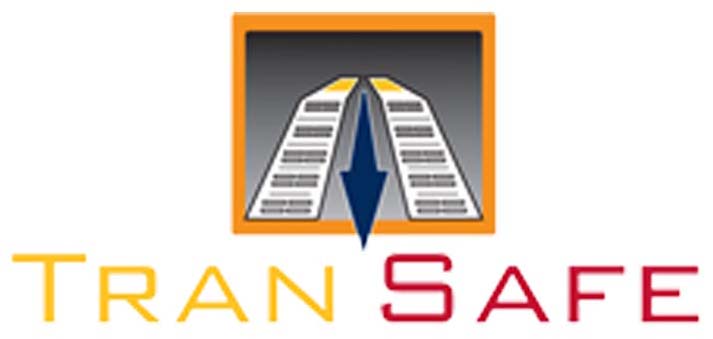Operational & Patient Safety
Safely Transporting The Bariatric Patient Into The Ambulance
After the patient is safely packaged on the stretcher, they must be loaded into the ambulance for transport. What could be a complex and dangerous operation to both EMT and patient is made simple and safe when utilizing the Transafe XRS2400. The stability of the litter and patient is greatest when the stretcher is at its lowest point, so make sure to work with the stretcher at this position as much during the transport process as possible.
- Transporting a patient by utilizing a Wraptor Mattress that in effect converts to a patient body burrito will significantly help to center the patient’s weight onto the cot and ensure critical cot stability while providing patient comfort.
- If you have a spare person on scene, perhaps an engineer from an engine company, have them assemble the Transafe XRS2400 ramps required to load the patient once they’ve arrived at the transporting vehicle. An experienced operator can have the ramps set up and the winch deployed in a very short amount of time, readied to be attached to the stretcher by the time the crew arrives. This makes the operation seamless.
Stretchers have an attachment point where the winch cable attaches to the cot frame directly or with supplemental pull slings (provided with the Transafe XRS2400). Once the stretcher is attached, loading the patient onto the ramps is at least a two-person operation, with one rescuer operating the winch and the other(s) guiding the patient into the ambulance. Once the patient is in the ambulance, the cot can be locked into the usual cot restraint system. The Transafe XRS2400 ramps should then immediately be retracted and stowed back into the ambulance and your patient is safely on their way.
Patients should be made as comfortable as possible, with at least a 30-degree angle on the head of the stretcher to reduce shortness of breath. Use of a Wraptor Mattress goes a long way to help achieve this. Your receiving facility will need some advance notice to prepare for your arrival. Provide this, but with attention to the patient’s dignity. In several transports done by my local bariatric unit, the patient cried during the transport because of embarrassment. It is difficult for a sobbing patient to communicate wants and needs during the journey to definitive care. It is in everyone’s best interests, from both humanitarian and patient care standpoints, to do all we can to preserve patient dignity and modesty. Moves like this are complicated, but at no time should they ever become a show.
Once you arrive at definitive care, complete the earlier steps in reverse. The ramps attach to the rear of the ambulance, and the stretcher is lowered using one rescuer to control the winch and other(s) to guide the stretcher. Adequate help should be available at the facility to transfer the patient to the facility’s stretcher or bed.
Moving a bariatric patient involves special techniques and equipment. An ounce of prevention is truly worth a pound of crisis management on a scene. Knowing what to do can be the difference between a good patient/public encounter and a poor showing.
General Rules When Parking the Ambulance
When utilizing the XRS2400 system it is very important to park the ambulance on level ground whenever possible. The staging area requires a minimum 40-foot length and 14-foot width to accommodate the ambulance, ramps and one stretcher length. On hills, use a level driveway rather than parking on the hill. If parking on a hill becomes necessary, face downhill only. Turn the front wheel toward the curb and chock the rear wheel to prevent rolling forward. Always set the ambulance’s parking brake on hills and level ground. Park the ambulance so that it doesn’t tilt to either side. An ambulance tilting to either side has the same adverse effect as uneven ramps.
Never park across the road on a hill.
General Rules of Ramp Angles
The ramps can be used to bridge across landings that are no higher than the floor of the ambulance. Never bridge down into the ambulance from a higher landing. The ramps have two angles that you must manage, lengthwise and sideward. The only thing holding the stretcher down on the ramps is gravity. When the center of gravity shifts, the stretcher is no longer stable and will tip. If ramp angles aren’t parallel lengthwise and/or level across the width, the stretcher will tilt, the center of gravity will shift and the stretcher will tip over and off the ramps, causing serious injury.
Lengthwise the angle of the ramps should be near parallel to accommodate four-point contact with the stretcher.
Both ramps must be level across their width. Neither ramp should lean inward or outward or from side-to-side, or to one side.
Never risk your patient’s safety by using ramps that aren’t stable. If you can’t stabilize the ramps, don’t move the patient across them.
Reposition the ambulance if the foot-end doesn’t have solid contact with the ground. For instance, if the foot-end rests on the edge of a curb and you foresee that the ramp would drop under the weight of a patient, then the ramps must be reconfigured to prevent movement. Never move the ambulance with the ramps attached, doing so will cause damage to the ramps.
